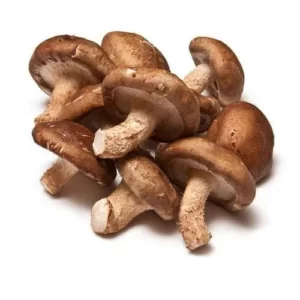Mushrooms, with their unique flavors and textures, have become increasingly popular in various culinary creations. While there are numerous mushroom varieties available, each with its distinctive characteristics, this article aims to shed light on the comparison between shiitake mushrooms and other commonly consumed varieties. By exploring their differences in taste, nutritional composition, and culinary applications, we aim to provide insights into the unique qualities that make shiitake mushrooms stand out.
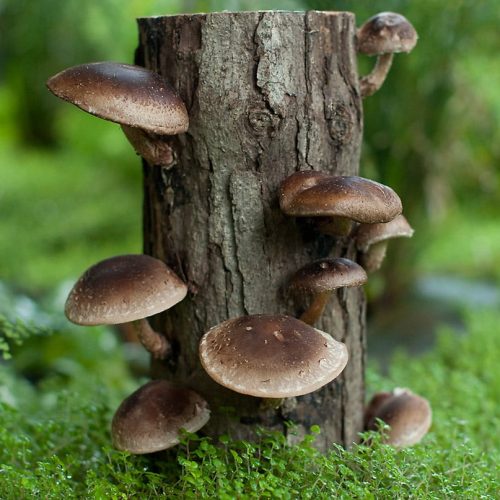
Taste and Texture
Shiitake Mushrooms
Shiitake mushrooms offer a delightful combination of flavors, often described as earthy, smoky, and slightly meaty. They possess a firm, chewy texture that adds depth to various dishes. When cooked, shiitake mushrooms develop a rich umami taste, making them a favorite in Asian cuisine and a versatile ingredient in many recipes.
Button Mushrooms
Button mushrooms, also known as white mushrooms or champignon mushrooms, have a milder taste compared to shiitake mushrooms. They offer a subtle, delicate flavor and a tender texture. Button mushrooms are commonly used in salads, soups, and sautéed dishes, adding a mild mushroom essence to the overall flavor profile.
Portobello Mushrooms
Portobello mushrooms, characterized by their large size and dark brown cap, possess a more robust flavor compared to both shiitake and button mushrooms. They have a meaty texture and a distinct, earthy taste. Due to their size, portobello mushrooms are often used as a vegetarian alternative to burgers or as a hearty centerpiece in various grilled or roasted dishes.
Nutritional Composition
Mushrooms, in general, offer an array of essential nutrients. However, the nutritional composition may vary among different varieties. Let’s explore the nutritional profiles of shiitake, button, and portobello mushrooms:
Shiitake Mushrooms
Shiitake mushrooms are not only renowned for their taste but also for their impressive nutritional value. They are a rich source of vitamins, minerals, and dietary fiber. Here are some key nutritional highlights of shiitake mushrooms:
- Vitamin D: Shiitake mushrooms stand out for their ability to produce vitamin D when exposed to sunlight or ultraviolet light. They are one of the few plant-based sources of this essential nutrient.
- B Vitamins: Shiitake mushrooms provide a range of B vitamins, including riboflavin, niacin, and pantothenic acid, which play essential roles in energy production and maintaining a healthy nervous system.
- Minerals: They contain minerals such as copper, selenium, and zinc, which contribute to various bodily functions, including immune support and antioxidant activity.
- Dietary Fiber: Shiitake mushrooms offer a good amount of dietary fiber, supporting digestive health and promoting satiety.
Button Mushrooms
Button mushrooms may have a milder taste, but they still offer notable nutritional benefits. Here are some key nutrients found in button mushrooms:
- B Vitamins: Button mushrooms are a good source of B vitamins, including riboflavin and niacin, which are essential for energy metabolism and supporting overall well-being.
- Minerals: They contain minerals such as potassium and phosphorus, contributing to electrolyte balance and bone health.
- Antioxidants: Button mushrooms contain antioxidants like selenium and ergothioneine, which help protect the body against oxidative stress.
Portobello Mushrooms
Portobello mushrooms have their own nutritional qualities that set them apart. Here are some notable nutrients in portobello mushrooms:
- Protein: Portobello mushrooms are relatively higher in protein compared to other mushroom varieties, making them a suitable option for those seeking plant-based protein sources.
- Dietary Fiber: They provide dietary fiber, aiding in digestion and promoting feelings of fullness.
- B Vitamins: Portobello mushrooms offer a range of B vitamins, including niacin, riboflavin, and pantothenic acid.
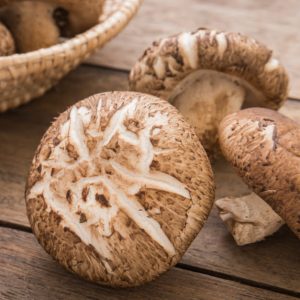
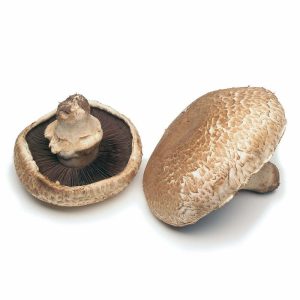
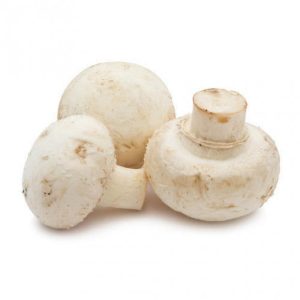
Culinary Applications
Each mushroom variety brings its unique qualities to the table, making them suitable for different culinary applications. Here are some common uses of shiitake, button, and portobello mushrooms:
Shiitake Mushrooms
Shiitake mushrooms’ robust flavor and firm texture make them a versatile ingredient in various dishes, including:
- Stir-fries and Asian-inspired dishes
- Soups and stews
- Pasta and risotto dishes
- Savory sauces and gravies
- Vegan and vegetarian recipes
Button Mushrooms
Button mushrooms’ mild flavor and tender texture make them a popular choice for:
- Salads and raw preparations
- Sautéed dishes
- Omelets and quiches
- Pizza and pasta toppings
- Stir-fries and mixed vegetable dishes
Portobello Mushrooms
Portobello mushrooms’ meaty texture and distinct taste make them suitable for:
- Grilled or roasted as a standalone dish or burger alternative
- Stuffed with various fillings, such as cheese or vegetables
- Added to sandwiches or wraps for a hearty filling
- Sliced and used in pasta dishes or risottos for added depth
Conclusion
When it comes to mushrooms, each variety offers its own unique characteristics, taste, and nutritional profile. Shiitake mushrooms stand out with their rich, smoky flavor and firm texture, while button mushrooms provide a mild, delicate taste. Portobello mushrooms offer a more robust, meaty flavor and are known for their versatility in various dishes.
Understanding the differences between these mushroom varieties allows you to select the most suitable option for your culinary creations. Whether you’re seeking an umami kick, a subtle mushroom essence, or a hearty meaty alternative, shiitake, button, and portobello mushrooms have something to offer. Embrace the diversity of mushrooms and savor their distinct qualities in your next gastronomic adventure.
